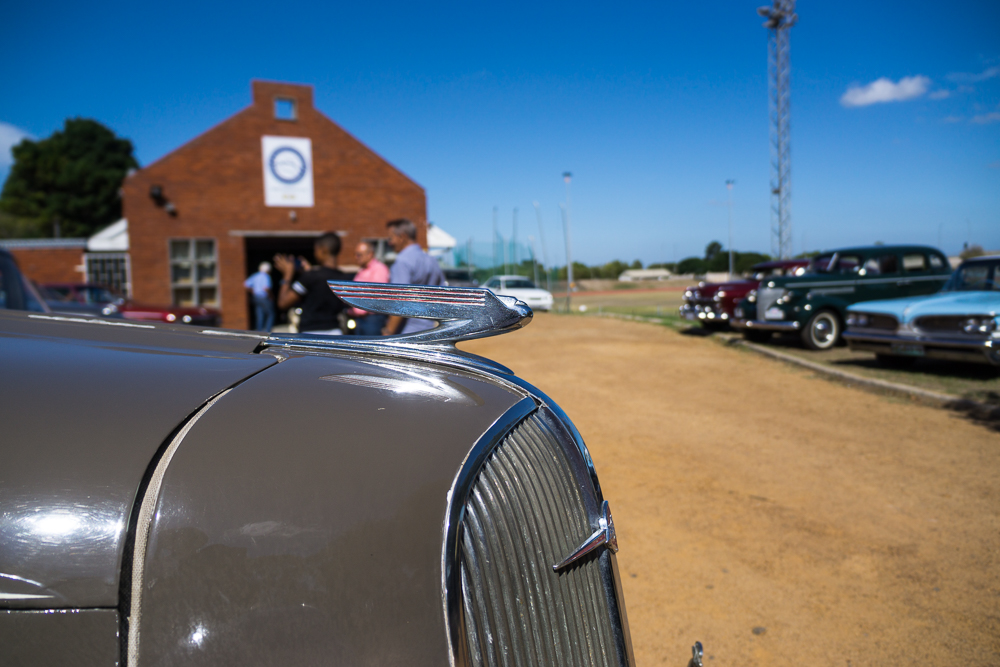GM Day at the Early Fords Car Club
The Early Fords Car Club is a poorly named club.
With more non-Ford members than Fords, the club name should probably be less specific. Either way, that’s why this month’s meeting focused on (but wasn’t exclusive to) GM.
A Red drophead Ford V8 took front and center and was flanked by a similarly colored Buick Riviera and a Hudson Hornet. That front display set the tone for the rest of the meet: other cars included a Puma GT, a 1933 Dodge Brothers creation, a Ford Zephyr-Six, and a 1905 Buick.
I myself arrived in a gorgeous blue Strato-Chief, a Pontiac built for Canada but sold as an unassembled kit car to South Africans.
The History of the Club
Oddly enough, the Early Fords Car Club isn’t the only vintage car club in the area, and in fact, it’s not even the largest. That honor belongs to the Crankhandle Club. Located just 15 miles away in the Southern Suburbs of Cape Town, The Crankhandle Club is the first classic car club in the Cape Town area.
Founded in 1955, the Crankhandle Club hoped to help preserve the Veteran and Vintage cars of the time. However, 14 years after the beginning of the Crankhandle club, some members decided to break off.
These members started The Early Fords Car Club, because they initially focused on old Ford Model As. However, as time went on, they began to include other cars – resulting in this day’s GM meet. Interestingly, the cultural reasons why these two clubs split date back to 1795..
The English Whites and The White Afrikaaners
White South African history actually begins with the Dutch. In 1652, Jan van Riebeeck founded the Cape Colony to act as a refueling stop for the Dutch East India Company.
However, when the French invaded the Netherlands at the end of the 1700s, the British used the subsequent disarray to claim the Cape Colony.
Post invasion, English became the business language, so the English-speaking merchants inhabited the neighborhoods closer to the city. The resident Dutch on the other hand, unhappy about being abandoned by the Dutch Government, formed their own White-Afrikaaner culture in the farmlands outside of the city.
Since many of the now White-Afrikaaners, were farmers, their culture is influenced by blue collar, do-it-yourself, agrarian ideals. This very different from the English-Whites who were predominantly white collar, city dwelling, business people.
The Crankhandle Club and The Early Fords Car Club
Not coincidentally, The Crankhandle club is based in the English Southern Suburbs, while The Early Fords Car Club meets in the predominantly Afrikaans Northern Suburbs. The cultural differences are quite clear if you attend their meetings.
The Crankhandle Club seems more a social club than a car club. Their meetings take place in a repurposed farmhouse complete with a dark wooden bar, plush red carpets and the smell of leather. Most of the owners work on their cars themselves, but many that I talked to hire mechanics. There was also a distinct lack of classic cars at the meeting, because all the members drove their daily drivers there.
On the other hand, The Early Fords Club was more like a car meet. Everyone parked their classic cars outside, and the clubhouse was a multi-purpose cement floored warehouse - subtly hinting that the emphasis was really on the cars outside. Almost all the members worked on their own cars, and most of the time was spent milling around each other’s cars having mixed Afrikaans-English conversations about them.
While these cultural differences are in no way hard and fast rules (especially as Cape Town continues to grow), their existence is evidence for just one part of South Africa’s wildly convoluted history.
You can see more photos from the GM Day at the Native Customs’ Facebook page.





